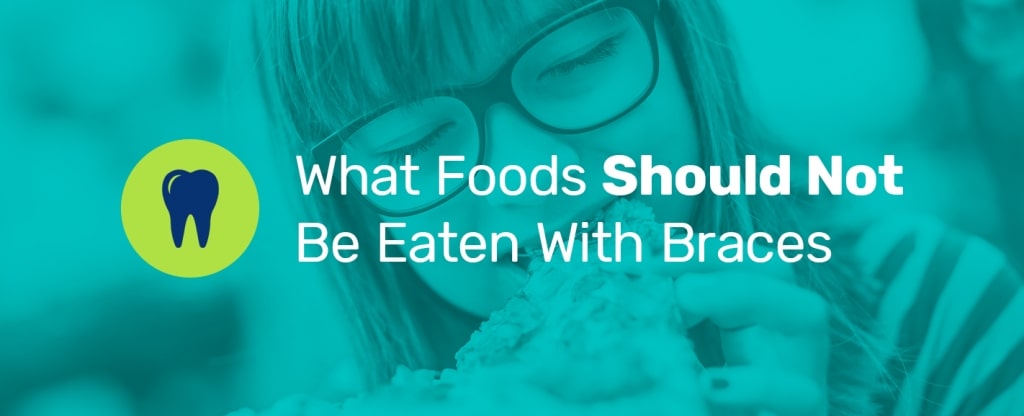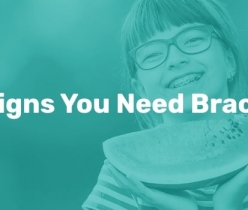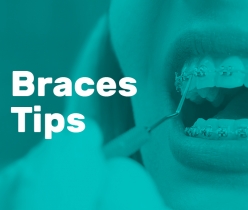Many people have to get braces at one point in their life — nearly four million people in the United States and Canada already wear them. While braces are necessary for many, they take some considerations to maintain. Proper care is particularly essential for kids who love sticky, sweet or crunchy foods. And let’s face it — most do! Though many foods are off-limits for a while, there is no shortage of delicious, healthy replacement meals to enjoy with braces.
Here is a review of what’s safe to eat for your child’s first few weeks of braces, and which foods they should avoid for the duration of their orthodontic treatment to protect their teeth and hardware.
In this guide, we’ll cover:
- How Do Braces Affect Eating
- What to Eat With Braces During the First Week
- How Long After Getting Braces Can You Eat Normally
- What Foods Should Not Be Eaten With Braces
- What to Do If Braces Get Damaged
- How to Eat With Braces
How Do Braces Affect Eating?
At first, eating might be uncomfortable or painful while your child’s mouth heals and they adjust to their new braces. Over time, those feelings will fade, but caution is still necessary. Eating the wrong foods while wearing braces or neglecting to clean their mouth the right way could lead to:
- Food getting stuck to or in braces.
- Worn, chipped or bent rubber bands, wires and brackets.
- Stains on teeth, bands and clear components.
- Plaque or tooth decay caused by trapped food.
Damaged braces are no longer effective and may require another trip to the orthodontist for repair.
What To Eat With Braces During The First Week
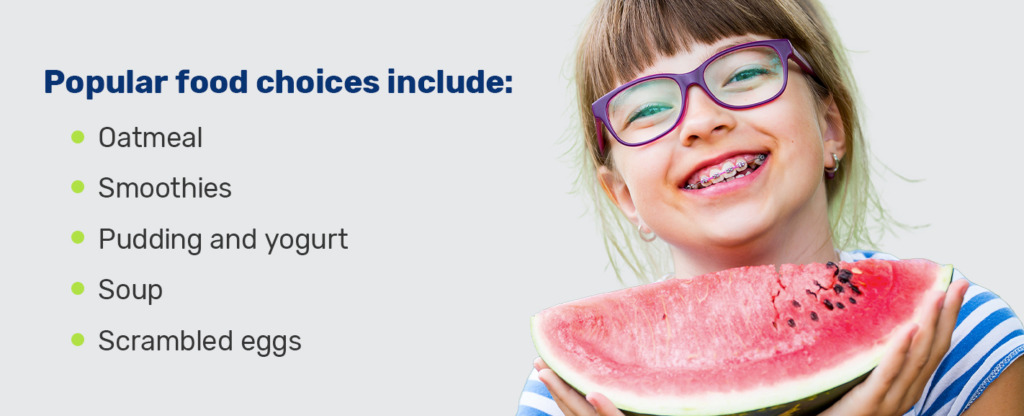
Your child will likely feel some pain or irritation around the teeth, gums and cheeks the first few days after getting braces. Since their teeth are more sensitive during this time, a diet consisting of soft foods is the safest and most comfortable option.
Some popular kid-approved choices include:
- Oatmeal: Flavor your oatmeal with honey, maple syrup or fruit, but leave nuts, seeds and other crunchy add-ins out for now.
- Smoothies: Avoid adding fruits containing hard seeds to your child’s smoothie and stick to fruits and vegetables like bananas, greens, protein powders, pineapple and blueberries.
- Pudding and yogurt: Getting braces doesn’t mean your child has to ignore their sweet tooth. Smooth puddings and yogurts are the perfect after-dinner treat.
- Soup: Choose a creamy or broth-based soup without hard-to-chew chunks of meat or vegetables. Puréed soups are a great way to incorporate more nutritious vegetables without large bites.
- Scrambled eggs: Scramble up eggs without hard cheeses or other omelet crunchy add-ins. For more flavor, cook with butter, seasonings or small herbs.
Avoid foods with extreme temperatures or tastes, even if they’re soft. Ice cream is soft enough to eat, for instance, but the cold temperature might further irritate your child’s mouth so soon after braces installation. The same is true for hot, spicy, acidic, sour or overly sweet meals and drinks.
How Long After Getting Braces Can You Eat Normally?
Fortunately, your child can eat normal foods not long after getting braces. Your orthodontist will send you and your child home with a more detailed timeline that factors in the entire procedure and any special concerns. Recovery time varies, depending on the extent of the procedure, your child’s tooth sensitivity and how long it takes for lingering pain to stop.
As irritation and soreness wear off, be careful not to introduce regular food too quickly. Expand your child’s diet slowly and allow their mouth plenty of time to accommodate as they make the transition.
Here is a list of foods you can eat with braces:
- Softened vegetables
- Boneless seafood
- Soft breads and pastries
- Ice cream without nuts or a cone
- Creamy mashed potatoes
- Bananas and canned fruits without seeds or skins
- Pancakes, waffles and French toast
- Soft dumplings and pasta
- Thicker soups and stews
- Cottage cheese
- Cooked beans
- Soft cereal
- Tofu and soft plant-based alternatives
- Creamy nut butter sandwiches
After the transition period, your child can enjoy tougher and chewier foods — like firmer cereal, tender meat, tortillas — as well as bolder flavors, like citrus fruits, spicy dishes and frozen yogurt.
What Foods Should Not Be Eaten With Braces
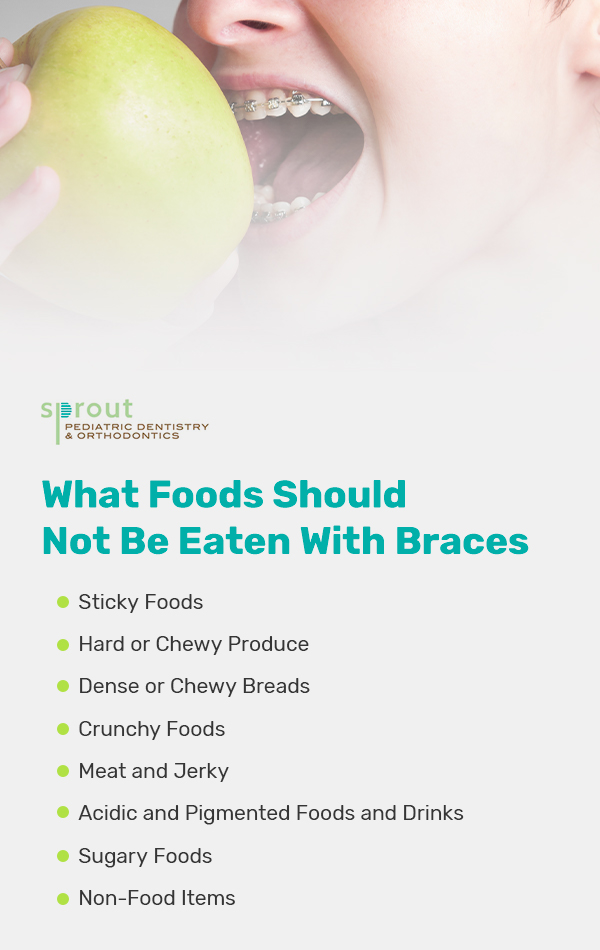
Use this list of foods you can’t eat with braces to create a guide to post in your kitchen or send with your child when they leave home.
Sticky Foods
Sticky foods can adhere to your child’s braces and are challenging to remove without professional help. Some foods, like caramels, can even trap other particles, which could lead to cavities or decay.
Examples of sticky foods and treats to avoid include:
- Gummy candy
- Chewing gum
- Caramels and candy with caramel fillings
- Hard candy and toffee
- Taffy and fruit chews
- Licorice sticks
- Suckers and lollipops
Hard or Chewy Produce
Fruits and vegetables are an essential part of a healthy diet, but not all produce is a good fit for a child with braces. In addition to avoiding hard raw vegetables — especially carrots, celery and cauliflower — you should also practice caution with unripe fruits and apples. Corn on the cob is especially damaging to braces — use a knife to cut the corn kernels from the cob before serving if you still want that garden-fresh taste.
Dense or Chewy Breads
While many breads, like tortillas, soft breadsticks and hearty sandwich bread, are OK for braces, others are not. Some thin, chewy breads can stick to braces and cause buildup. Thick, dense breads can be tough to chew and cause too much stress on braces, leading to loose parts or mouth pain.
Examples of dense and chewy breads are:
- Bagels
- Baguettes
- Hard rolls
- Crunchy pizza crust
- Dense sandwich bread
Does that mean your child has to skip out on school pizza day or movie nights with the family? Thankfully, no! Teach your child how to determine the difference between a hard crust and a soft crust so they know their limits when away from home. If ordering delivery, avoid thin crust or deep dish pizzas and focus more on soft, pillowy pizza crusts. Be mindful of the toppings, too — no overly chewy meat, tough veggies or overly acidic sauces.
Crunchy Foods
Crunchy foods put too much stress on braces and may break into smaller pieces that lodge themselves between the teeth. Avoid food items like:
- Chips
- Hard pretzels
- Popcorn
- Nuts
- Seeds
- Hard taco shells
- Granola bars
Some items, like cookies and crackers, are OK to eat on a case-by-case basis. For example, soft-baked cookies or cookies dunked in milk are usually safe, but hard, crunchy cookies or those with chewy add-ins are not.
Meat and Jerky
Bone-in chicken wings, well-done steak and beef jerky are common sources of braces damage. Stringy meat, like tough beef, can get stuck in between the teeth while chewing. Replace meat with soft plant-based alternatives, like tofu or veggie burgers. You could also incorporate softer meat into meals, like ground meats in dishes like chili and meatloaf.
Acidic and Pigmented Foods and Drinks
Excessively acidic or deeply pigmented foods may stain braces, especially after prolonged or repeated exposure. Allow your child occasional indulgences and have them clean their mouth immediately after.
Examples of acidic and strongly colored foods and drinks include:
- Certain berries
- Tomato-based products
- Beet juice
- Grape juice
- Coffee
- Tea
Sugary Foods
It’s no secret that too much sugar is bad for your teeth, and that’s especially true for children with braces. Some sugary foods, like soft drinks, coffee beverages, chocolate or pie fillings, can mix with saliva to create a sticky or gritty film in the mouth. If not cleaned properly, this film can lead to tooth decay or put premature wear on brackets.
Non-Food Items
As a parent, you’re probably familiar with young children’s tendency to chew on non-food items. This habit can damage braces and wear down their teeth. Discourage your child from chewing on any of these non-food items:
- Pens and pencils
- Erasers
- Shirt sleeves
- Hoodie strings
- Drinking straws
- Ice cubes
- Toothbrushes
- Their hair
What to Do If Braces Get Damaged
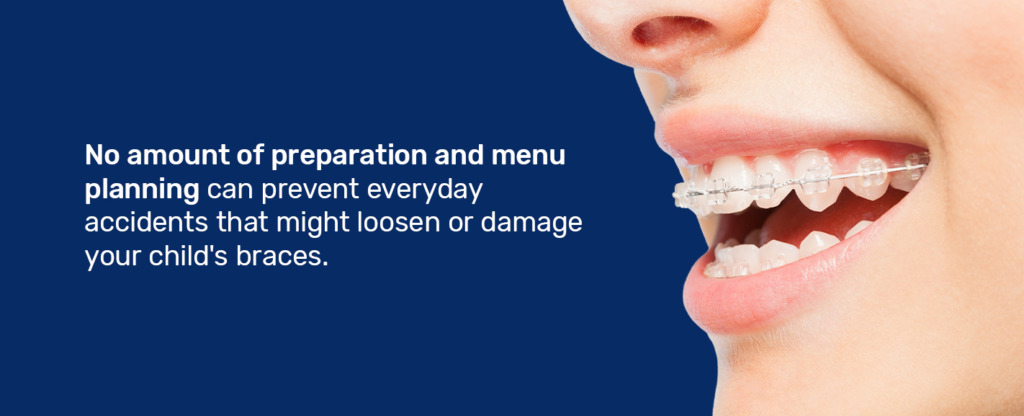
Gym class accidents, a rogue soccer ball during practice, a piece of candy that turned out chewier than expected — it happens! No amount of preparation and menu planning can prevent everyday accidents that might loosen or damage your child’s braces.
Fortunately, most damage is an easy fix for the orthodontist, and there are several steps you can take to lessen the impact on your child’s mouth:
- Recognize the signs: Your child will probably be the first one to recognize when something isn’t right with their braces. Review common damage signs with them, like bent or protruding wires, loose brackets or unexplained pain, and inspect the area thoroughly when needed. Note any changes or concerns you see.
- Contact your orthodontist: Do not attempt to replace bands or re-glue brackets at home. The sooner you schedule an appointment to get your child’s braces fixed, the sooner they’re back on track for a healthy smile.
- Collect loose parts: Gather any loose parts, like dislodged brackets, and keep them in a sealable bag to take to the orthodontist appointment. In some cases, they might be able to sanitize, repair and reuse those parts instead of ordering and installing new ones.
- Move sharp wires: Sharp wires can irritate gums and cheeks, and cause minor scratching or poking. If necessary, use tweezers to gently rotate or bend wires away from sensitive tissue. You might have to use a nail trimmer or small pliers to cut the ends — just be sure your child doesn’t swallow any residue. This is usually under the direction of the orthodontist and shouldn’t be attempted without proper instruction prior.
- Use dental wax: Use dental wax for uncomfortable or shifting wires and brackets until you can see your orthodontist for a more permanent solution.
- Invest in a mouthguard: Invest in a mouthguard for your child to wear during sports practice or gym class or if they grind their teeth at night. Make sure the mouthguard is safe for use with braces, and ask your dentist or orthodontist for a recommendation if you’re not sure where to start.
- Clean any wounds: If wires or brackets have caused cuts, tears or blisters, be sure to clean the wound several times daily. Use a disinfectant cream or rinse to clear away bacteria, and mix up some warm salt water for your child to gargle if they feel any pain.
- Return to soft foods: Return to your child’s previous soft foods diet if their braces are damaged. Wait to reintroduce normal foods until after you’ve seen your orthodontist and repairs are complete.
How to Eat With Braces
Choosing the right foods is a critical part of wearing braces, but there are other steps you can take to keep your child’s mouth safe from food-related damage. Explain these steps to your child to help them eat well and keep braces clean when they eat:
- Choose the right toothbrush: Using a smaller, softer toothbrush will help avoid irritation and reach the spaces between the braces more easily. Ask your dentist for a brush recommendation that fits your child’s mouth and isn’t too big or small. Look for extra features, like a gripped handle or tongue cleaner, that make brushing even easier.
- Brush after meals: Brushing after meals keeps food from sitting in your child’s teeth for an extended time, causing plaque buildup. Your child should brush their teeth at least three times a day — morning, midday and before bed — but preferably after each meal. If no toothbrush is available, have them rinse their mouth out with water or mouthwash.
- Floss daily: Flossing helps reach places the toothbrush may have missed and makes it easier to remove food stuck between the brackets. Teach your child how to floss thoroughly and gently to avoid dislodging brackets or hurting their gums.
- Get regular dental checkups: Regular checkups with your family dentist lets them clean your child’s teeth thoroughly and spot any potential issues that may require attention. Your dental checkups should also include scheduled trips to the orthodontist to inspect, tighten and adjust braces as needed.
- Keep nutrition in mind: As you plan a braces-friendly menu for your child, remember to focus on nutrition. Many items, like tough proteins and raw vegetables, will be off-limits for a while or even until your child’s braces come off. Find healthy, equally nutritious replacements so they have the fuel they need to get through the day.
- Find substitutes for favorite foods: Having braces can be a challenging adjustment for some kids. Remind your child they won’t have braces forever and that they are necessary to ensure a happy, healthy smile. Make it easier by finding delicious substitutes for favorite foods. Try fruity ice cream instead of gummy candy, soft chicken nuggets instead of crunchy chicken strips and natural fruit juice instead of soft drinks.
Learn More at Sprout Pediatric Dentistry & Orthodontics
Is your child new to wearing braces and you need an experienced orthodontist to guide you through the process? Or are you looking for a new child-friendly pediatric dentist? Either way, Sprout Pediatric Dentistry & Orthodontics can help. We offer a range of pediatric dentistry and orthodontics services for children of all ages and needs.
Give us a call at 503-477-9911 or contact us online to request an appointment to install or inspect your child’s braces.

A Portland native, Dr. Paul went to dental school at OHSU and finished his Orthodontic Residency in Philadelphia, PA. Dr. Paul works with children and teenagers at his orthodontic practice.


